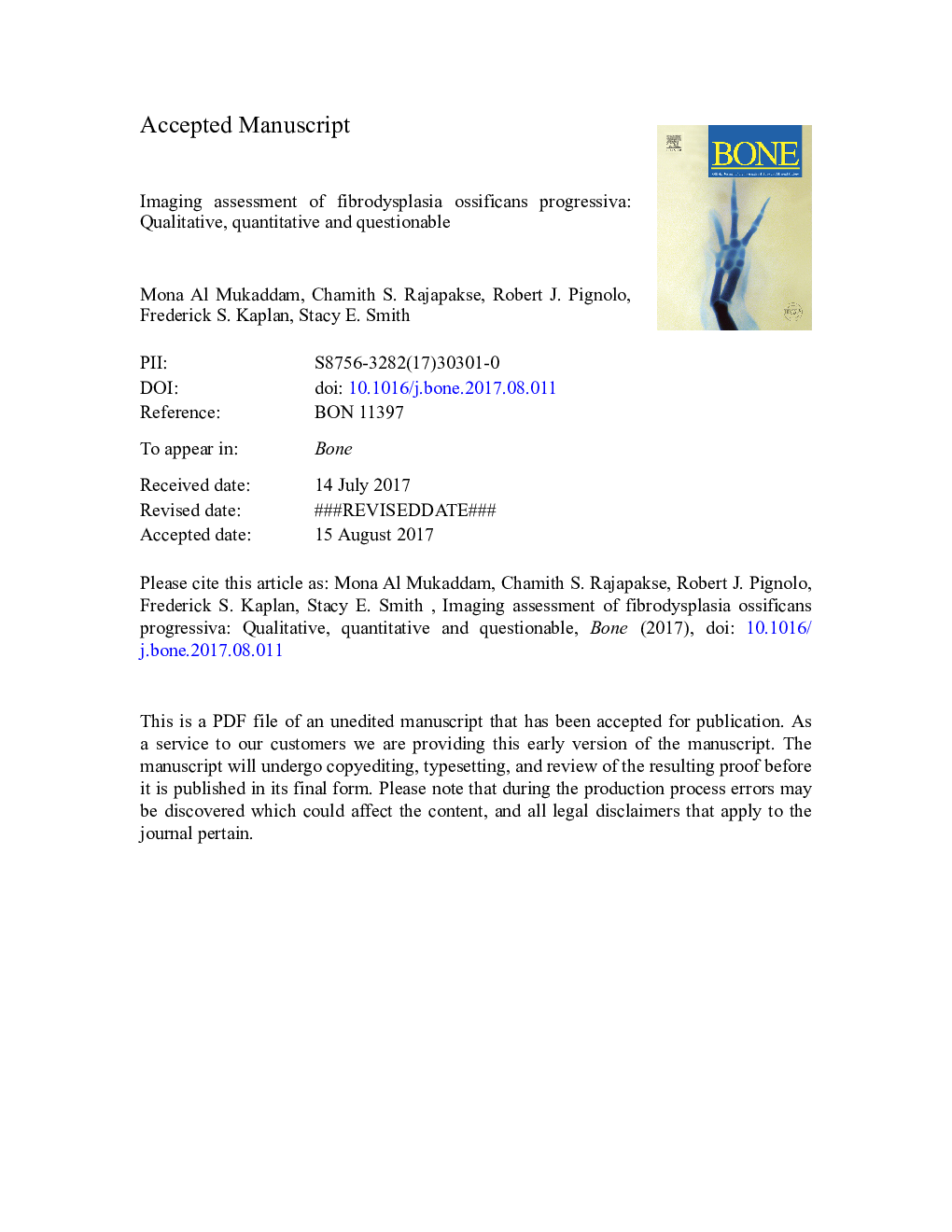| Article ID | Journal | Published Year | Pages | File Type |
|---|---|---|---|---|
| 8625045 | Bone | 2018 | 26 Pages |
Abstract
Fibrodysplasia ossificans progressiva (FOP) is an ultra-rare autosomal dominant genetic disorder of heterotopic ossification (HO) characterized by skeletal anomalies and episodic soft tissue swelling (flare-ups) that can transform into heterotopic bone. The progressive development of heterotopic bone and progressive arthropathy leads to significant limitation of mobility. This paper will review various imaging modalities used in evaluating episodic soft tissue swelling (flare-ups), heterotopic bone and skeletal anomalies. Different imaging modalities are required at different stages of the disease. Ultrasound and MRI can be useful for evaluating edema in early stages of a flare-up; MRI being superior to ultrasonography. Plain radiographs and computed tomography (CT) can evaluate heterotopic bone in later stages of HO, but CT scan is better at evaluating presence and the volume of heterotopic bone. Functional imaging demonstrates increased activity at sites of flare-ups, their utility in determining disease progression need to be further evaluated. Cost, radiation exposure, availability of various imaging modalities and the ability of FOP patients to fit in the scanner are all considerations when requesting radiographic tests in a patient with FOP. Future studies are required to determine if early radiographic findings can determine disease progression and response to treatment in this disorder.
Keywords
Millisievert18F-sodium fluoride18F-NaFALK2ACVR1fibrodysplasia ossificans progressivaFibrodysplasia ossificans progressiva (FOP)mSvPET-CTanterioposteriorFOPHeterotopic ossificationHeterotopic boneMRIMagnetic resonance imagingpositron emission tomography-computed tomographycomputed tomographyUltrasonographyBone morphogenetic protein
Related Topics
Life Sciences
Biochemistry, Genetics and Molecular Biology
Developmental Biology
Authors
Mona Al Mukaddam, Chamith S. Rajapakse, Robert J. Pignolo, Frederick S. Kaplan, Stacy E. Smith,
